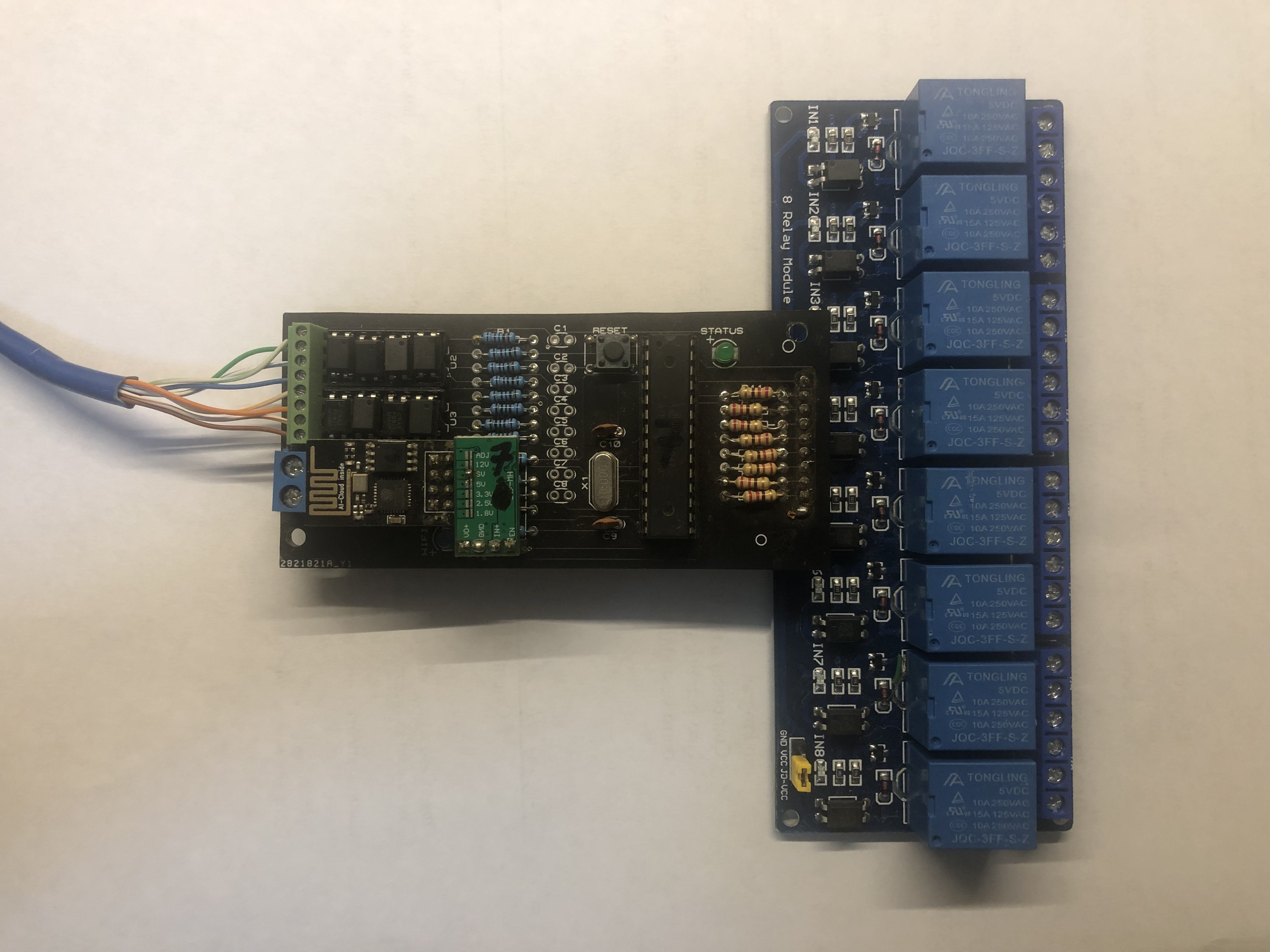PCB Impedance Control
Published on 12/29/2018 3:39:05 PM
Description
<p align="center" style="text-align:left;"> <span style="font-family:"font-size:18px;"><span style="font-family:"font-size:18px;">As PCB signal switching speeds continue, today's PCB designers need to understand and control the impedance of PCB traces. Corresponding to the shorter signal transmission times and higher clock rates of modern digital circuits, </span><strong><span style="font-family:"font-size:18px;">PCB traces</span></strong><span style="font-family:"font-size:18px;"> are no longer simple connections, but transmission lines.</span></span> </p> <p> <span style="font-family:"font-size:18px;"> </span> </p> <p> <span style="font-family:"font-size:18px;">In the actual case, it is necessary to control the trace impedance when the digital marginal speed is higher than 1 ns or the analog frequency exceeds 300 Mhz. One of the key parameters of a <a href="https://www.allpcb.com/pcb_trace_width_tolerance.html" target="_blank">PCB trace</a> is its characteristic impedance (ie, the ratio of voltage to current as the wave travels along the signal transmission line).</span> </p> <p> <span style="font-family:"font-size:18px;"> </span> </p> <p> <span style="font-family:"font-size:18px;"><span style="font-family:"font-size:18px;">The characteristic impedance of the conductor on the printed circuit board is an important indicator of the board design. Especially in the PCB design of the </span><strong><span style="font-family:"font-size:18px;">high-frequency circuit</span></strong><span style="font-family:"font-size:18px;">, it must be considered whether the characteristic impedance of the conductor and the characteristic impedance required by the device or signal are consistent or not.</span></span> </p> <p> <span style="font-family:"font-size:18px;"> </span> </p> <p> <span style="font-family:"font-size:18px;">This involves two concepts: impedance control and impedance matching. This article focuses on the issues of impedance control and stack design.</span> </p> <p> <span style="font-family:"font-size:18px;"> </span> </p> <p> <span style="font-family:"font-size:18px;">Impedance control, the transmission of various signals in the conductors of the circuit board, in order to increase its transmission rate must increase its frequency, the line itself due to etching, laminate thickness, wire width and other factors, will Causes the impedance to vary and the signal is distorted. Therefore, the conductor on the high-speed circuit board, the impedance value should be controlled within a certain range, called "impedance control."</span> </p> <p> <span style="font-family:"font-size:18px;"> </span> </p> <p> <span style="font-family:"font-size:18px;"><span style="font-family:"font-size:18px;">The impedance of the PCB trace will be determined by its inductive and capacitive inductance, resistance and conductance. The factors that affect the </span><a href="https://www.allpcb.com/characteristic_impedance.html" target="_blank"><span style="font-family:"font-size:18px;">impedance of the PCB trace</span></a><span style="font-family:"font-size:18px;"> are: the width of the copper wire, the </span><a href="https://www.allpcb.com/pcb_copper_thickness.html" target="_blank"><span style="font-family:"font-size:18px;">thickness </span></a><span style="font-family:"font-size:18px;">of the copper wire, the dielectric constant of the dielectric, the thickness of the dielectric, the thickness of the pad, the path of the ground wire, and the traces around the trace. The PCB impedance ranges from 25 to 120 ohms.</span></span> </p> <p> <br /> </p> <p style="text-align:center;"> <img src="https://file.allpcb.com/bbs/18/12/29/153123370.png" alt="" /><span style="font-family:"font-size:18px;"> </span> </p> <p> <span style="font-family:"font-size:18px;"> </span> </p> <p> <span style="font-family:"font-size:18px;"><span style="font-family:"font-size:18px;">In practical situations, a PCB tran</span><span style="font-family:"font-size:18px;">smission line usually consists of a wire trace, one or more reference layers, and an insulating material. Traces and slabs for</span><span style="font-family:"font-size:18px;">m the control impedance. PCBs will often be multi-layered and the control impedance can be built in a variety of ways.</span></span> </p> <p> <span style="font-family:"font-size:18px;"> </span> </p> <p> <span style="font-family:"font-size:18px;">There are two main forms of PCB transmission lines: Microstrip and Stripline.</span> </p> <p> <span style="font-family:"font-size:18px;">The microstrip line is a strip conductor, which refers to a transmission line with a reference plane on one side. The top and sides are exposed to the air (also coated with a coating) on the surface of the insulation constant Er board. The power or ground plane is a reference.</span> </p> <p> <span style="font-family:"font-size:18px;"> </span> </p> <p> <span style="font-family:"font-size:18px;">The stripline is a strip conductor placed between two reference planes, as shown in the following figure, the dielectric constants of the dielectrics represented by H1 and H2 may be different.</span> </p> <p> <span style="font-family:"font-size:18px;"> </span> </p> <p> <span style="font-family:"font-size:18px;">The above two examples are only a typical example of microstrip lines and strip lines. There are many kinds of microstrip lines and strip lines, such as laminated microstrip lines, which are related to the laminated structure of a specific PCB.</span> </p> <p> <span style="font-family:"font-size:18px;"> </span> </p> <p> <span style="font-family:"font-size:18px;">The equations used to calculate the characteristic impedance require complex mathematical calculations, usually using field solving methods, including boundary element analysis, so using the special impedance calculation software SI9000, all we need to do is to control the parameters of the characteristic impedance.</span> </p> <p> <span style="font-family:"font-size:18px;"> </span> </p> <p> <span style="font-family:"font-size:18px;">The dielectric constant Er of the insulating layer, the trace widths W1, W2 (trapezoidal), the trace thickness T, and the thickness H of the insulating layer.</span> </p> <p> <span style="font-family:"font-size:18px;">The characteristic impedance is inversely proportional to the width of the transmission line. The wider the width, the lower the impedance, and vice versa.</span> </p> <p> <span style="font-family:"font-size:18px;"> </span> </p> <p> <span style="font-family:"font-size:18px;">In the design requirements of some boards, when the thickness of the layer is limited, in order to achieve better impedance control, it is very important to use a good laminate design. From the actual calculations, the following conclusions can be drawn:</span> </p> <p> <span style="font-family:"font-size:18px;"> </span> </p> <p> <span style="font-family:"font-size:18px;">1. Each signal layer must have a reference plane adjacent to ensure its impedance and signal quality.</span> </p> <p> <span style="font-family:"font-size:18px;"> </span> </p> <p> <!--[if !supportLists]--><span style="font-family:"font-size:18px;">2. </span><!--[endif]--><span style="font-family:"font-size:18px;">Each power plane must have a complete ground plane adjacent, so that the performance of the power supply can be better guaranteed.</span> </p> <p> <span style="font-family:"font-size:18px;"> </span> </p> <p> <span style="font-family:"font-size:18px;">Through software calculations, it is found that changing the spacing of differential pairs has a greater impact on impedance control, but another problem involved here is the coupling problem of differential pairs.</span> </p> <p> <span style="font-family:"font-size:18px;"> </span> </p> <p> <span style="font-family:"font-size:18px;">The main purpose of differential pair coupling is to enhance the anti-interference ability to the outside world and suppress EMI. The coupling is divided into a tight coupling method (ie, the differential line spacing is less than or equal to the line width) and a loose coupling method.</span> </p> <p> <span style="font-family:"font-size:18px;"> </span> </p> <p style="text-align:center;"> <img src="https://file.allpcb.com/bbs/18/12/29/153143222.png" alt="" /><span style="font-family:"font-size:18px;"> </span> </p> <p> <span style="font-family:"font-size:18px;"> </span> </p> <p> <span style="font-family:"font-size:18px;">If you can ensure that all the surrounding traces are far away from the differential pair (for example, more than 3 times the line width), the differential traces do not need to ensure tight coupling. The most important thing is to ensure that the trace lengths are equal. (See the explanation of the differential trace on Johnson's Signal Integrity website, which asks his layout engineer to move the differential line farther away so that it can be wound around).</span> </p> <p> <span style="font-family:"font-size:18px;"> </span> </p> <p> <span style="font-family:"font-size:18px;">However, most of the multi-layer high-speed PCB boards have very tight wiring space, and it is impossible to isolate the differential traces from other traces. Therefore, it is appropriate to maintain tight coupling to increase the anti-interference ability.</span> </p> <p> <span style="font-family:"font-size:18px;"> </span> </p> <p> <span style="font-family:"font-size:18px;">Tight coupling is not a necessary condition for differential traces, but when the space is not enough, the tight coupling of the traces can enhance the anti-interference ability of the differential traces. Therefore, for the impedance control problem of the differential pair, how to adjust each parameter needs to comprehensively consider the above factors and select the best. In general, the pitch and line width of the differential pair are not easily adjusted.</span> </p> <p> <span style="font-family:"font-size:18px;"> </span> </p> <p> <span style="font-family:"font-size:18px;">The underside of the component surface (the second layer) is the ground plane, providing the device shielding layer and providing a reference plane for the top layer wiring.</span> </p> <p> <span style="font-family:"font-size:18px;">All signal layers are as close as possible to the ground plane,</span> </p> <p> <span style="font-family:"font-size:18px;">Try to avoid direct proximity of the two signal layers,</span> </p> <p> <span style="font-family:"font-size:18px;">The main power source is adjacent to it as far as possible,</span> </p> <p> <span style="font-family:"font-size:18px;">Consider the symmetry of the laminated structure.</span> </p> <p> <span style="font-family:"font-size:18px;"> </span> </p> <p> <span style="font-family:"font-size:18px;">For the layer layout of the mother board, the existing motherboard is difficult to control parallel long distance wiring, and the board operating frequency is above 50 MHz.</span> </p> <p> <span style="font-family:"font-size:18px;"> </span> </p> <p> <span style="font-family:"font-size:18px;">For cases below 50MHZ, refer to the appropriate relaxation, the recommended arrangement principle,</span> </p> <p> <span style="font-family:"font-size:18px;"> </span> </p> <p> <span style="font-family:"font-size:18px;">1, The component surface and the welding surface are complete ground planes.</span> </p> <p> <span style="font-family:"font-size:18px;">2, No adjacent parallel wiring layers.</span> </p> <p> <span style="font-family:"font-size:18px;">3, All signal layers are as close as possible to the ground plane.</span> </p> <p> <span style="font-family:"font-size:18px;">4, The key signals are adjacent to the formation and do not span the partition.</span> </p>
86
comment
All comments
 Unknown
Unknown
4881
0
86
Rules about cashback: 1. Valid time: ALLPCB cashback activity will end on April 1st. 2. Capped amount: The capped amount of cashback for each account is $5,000. Each order can get a maximum of $2,000 cashback. That means every author can get $5,000 max. 3. Cashback range: The cashback activity only covers the corresponding PCB order. The order amount for other combined payment products will be invalid. 4. Clicking your own promotional link will be invalid. The same email address, shipping address, contact information, and phone number are all recognized as the same account. 5. ALLPCB has the final interpretation right of the cashback activity.
ALLPCB will donate 2% to the author for this promotion link.

